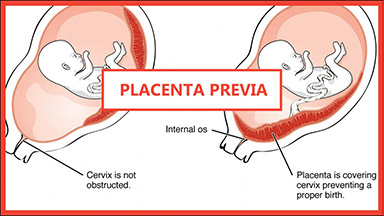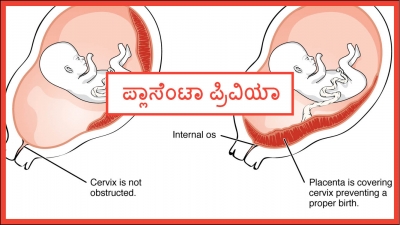It is not clear as to why in placenta previa, the placenta gets implanted so low. One of the possible reasons is if the upper part of the uterus inner layer is not thick enough because of previous abortions, surgery or C-section.
Placenta Previa is also seen in a twin pregnancy, or in a placenta which is very big, fibroids, or maternal age more than 35. As pregnancy progresses, the lower end of the uterus grows and if the placenta is at the lower end of the uterus, it can disrupt the placental blood vessels causing it to bleed.
Symptoms of placenta previa -
The sudden and painless onset of bleeding usually after 20 weeks of pregnancy. The amount can be intermittent or continuous.
Complications -
Maternal bleeding, fetal hypoxia and premature delivery.
Placenta Previa is usually diagnosed during a prenatal ultrasound. Occasionally it is not diagnosed till symptoms of bleeding occurs.
Treatment
The goal is to Prevent preterm birth and manage maternal bleeding.
For minor maternal bleeding, bed rest is usually sufficient. But for major bleeding IV fluids and blood may be needed.
In some cases, if bleeding is a lot and the baby’s heart rate shows signs of distress then a decision may be made by the Doctor for immediate or emergency C-Section.






